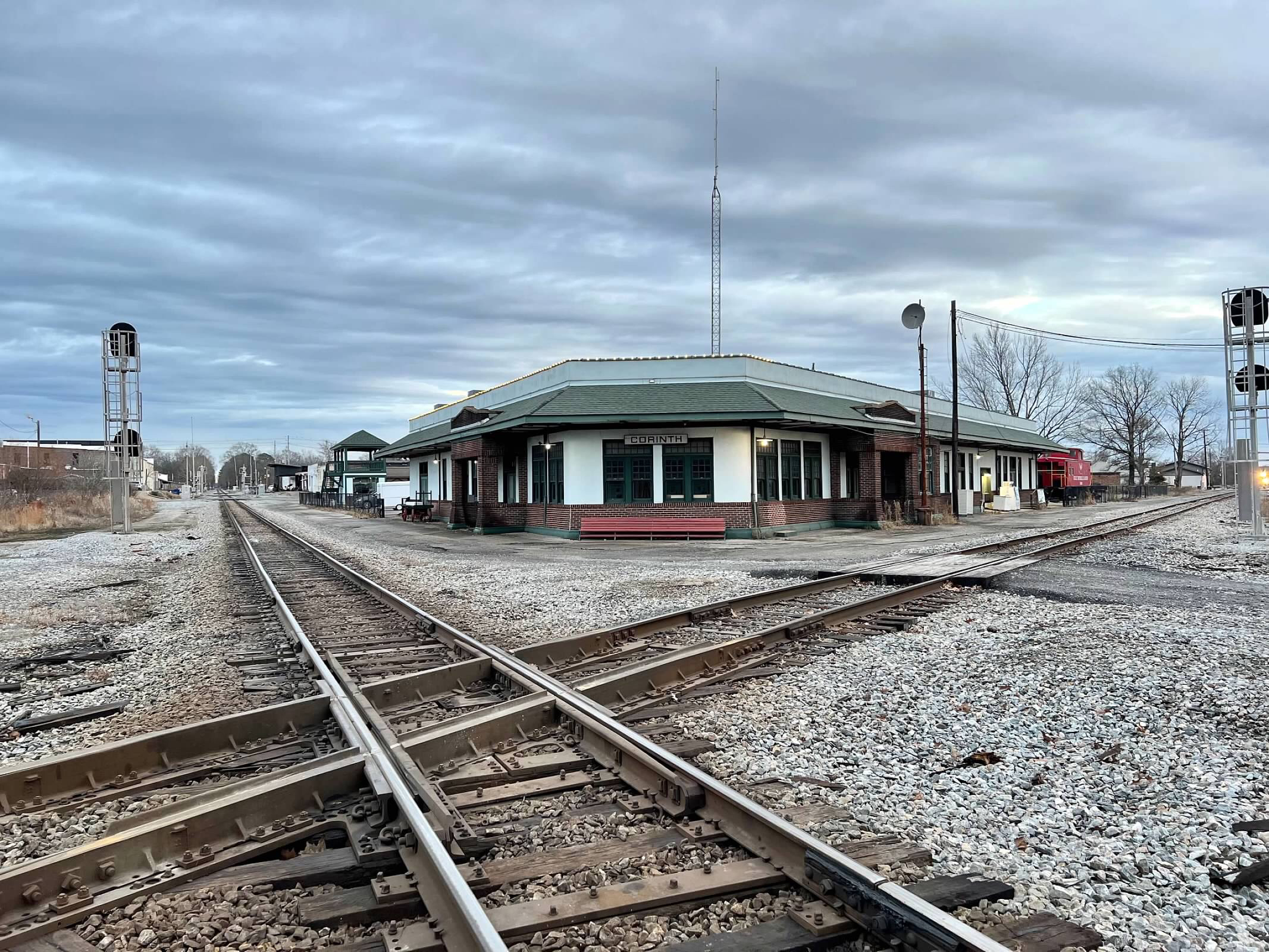The National Park Service opened the terrific Corinth Civil War Interpretive Center in 2004 to tell the story of Corinth, Mississippi’s role in the U.S. Civil War. The Interpretive center is a modern 15,000 square foot facility that houses interactive exhibits about the Battle of Shiloh and subsequent fighting around Corinth. The film about the Siege of Corinth is particularly well done!

The Corinth Civil War Interpretive Center is a great place to begin exploring Corinth’s Civil War History. Be sure to download the free Battle of Shiloh app offered by the American Battlefield Trust before beginning your tour. The app contains interactive maps of Corinth and Shiloh National Battlefield. It features videos that explain the significance of locations along the self-guided tour.

Corinth’s Civil War History
Capturing Corinth was an important strategic objective for the Union Army because it sits at the junction of the Mobile & Ohio and Memphis & Charleston rail lines. After making headway in Kentucky, General Ulysses S. Grant set his sights on Corinth.

“Corinth was a valuable strategic point for the enemy to hold, and consequently a valuable one for us to possess ourselves of.”
Personal Memoirs of Ulysses S. Grant
Grant’s Army of the Tennessee arrived at Pittsburg landing just north of Corinth on April 9, 1862. The Union plan called for Grant’s Army to march south to Corinth with General Don Carlos Buell’s Army of the Ohio. Confederate General Albert Sidney Johnson moved his troops north to engage Grant before Buell arrived – setting off the Battle of Shiloh. During the fighting, Johnson was killed leaving General P.G.T. Beauregard in charge of Confederate forces. By the end of the first day of fighting, it appeared a Confederate victory was eminent, but Buell’s forces arrived that evening and turned the tide of the battle to the Union’s favor.

Beauregard retreated to Corinth with 10,000 wounded and dying troops – overwhelming the town’s water supply and sanitation capabilities. As a result of being caught off guard, Grant’s reputation took a hit, and Major General Henry Halleck replaced him as Union commander. Halleck led the month long Siege of Corinth, which resulted in the Union taking the vital rail junction.

Confederate General Earl Van Dorn lead an attempt to retake Corinth on October 3, 1862, but his troops were repelled by Union General William Rosencrans’ forces. Following the Second Battle of Corinth, Grant launch attacks against Vicksburg.

Corinth Contraband Camp
As the Union Army advanced in the South, enslaved people began fleeing to safety in Union controlled territory. When President Lincoln issued the preliminary Emancipation Proclamation in September 1862, the number of slaves escaping to freedom in Corinth grew exponentially. General Grenville Dodge established the Corinth Contraband Camp to accommodate the newly freed citizens. By August 1863, over 1,000 African Americans were living in the camp.

A cooperative farm was established where the Freedman grew corn and cotton and earned money for their efforts. Missionaries from the North relocated to the camp and set up schools. The camp’s children went to school during the day, and their parents were taught to read and write in the evenings. The Army recruited a regiment of infantrymen from the camp – one of the first to be composed of African Americans – the 1st Alabama Infantry Regiment. Eventually 6,000 African Americans were living at the camp. As the Civil War drew to a close, the camp was disbanded and moved to nearby Memphis, Tennessee.


Today, the camp’s buildings are gone, but visitors can enjoy the .2 mile walking trail that circles the camp’s grounds. Bronze statutes along the route depict life at the camp. The trail is paved and dog friendly, so bring you pup!
Click here for more Land of Liberty Explorers! We’d appreciate it if you follow us on Pinterest or Facebook!


